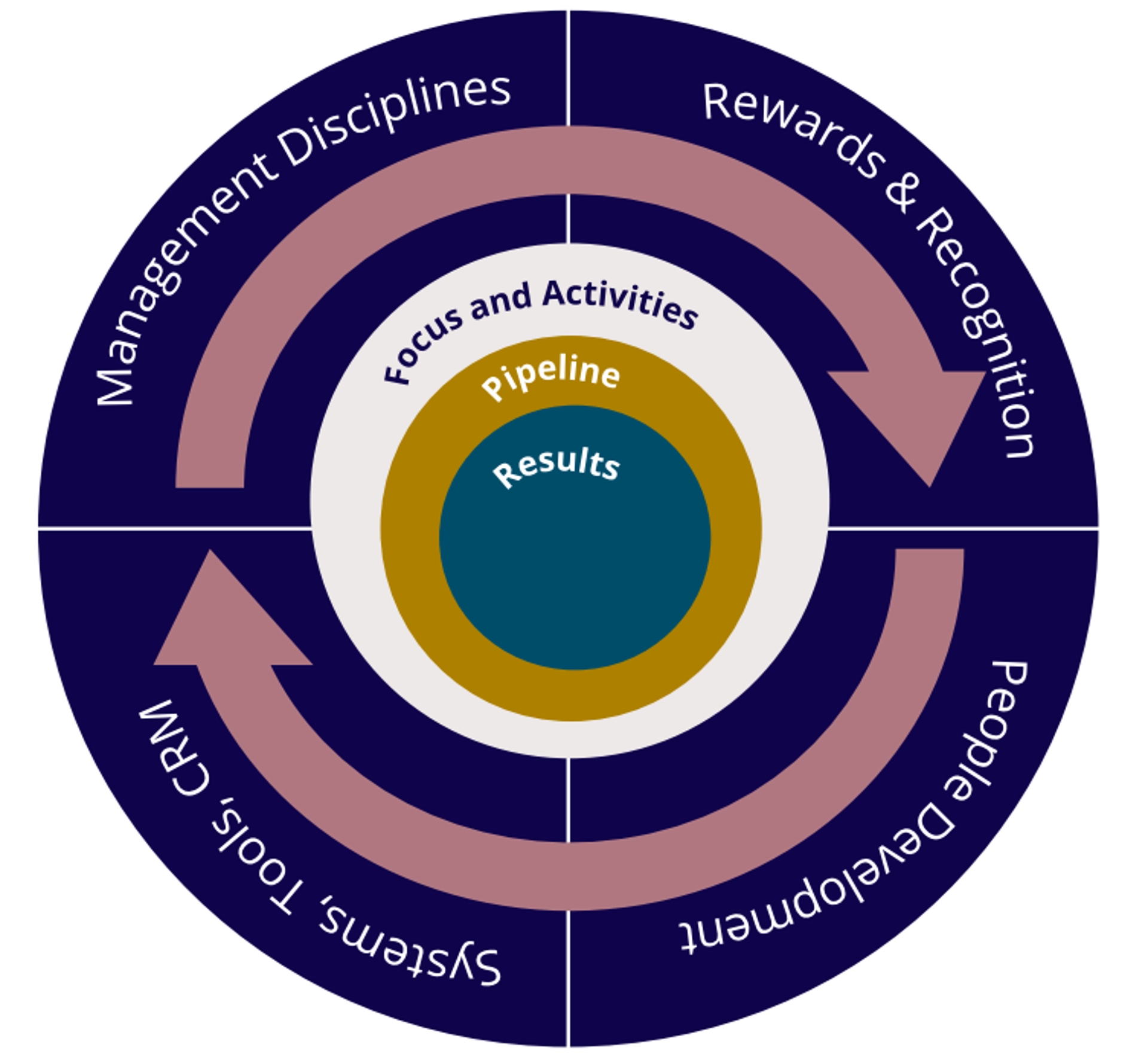Introduction to Managing Multiple Sales Teams
Effective management of multiple sales teams is a dynamic and intricate task that demands a profound understanding of the nuances within sales leadership. Sales teams operate at the forefront of an organization, acting as driving forces behind revenue generation and market success. Recognizing the significance of strategic team management becomes paramount in navigating the complexities of the sales landscape. A comprehensive understanding of sales leadership, team dynamics, and collaboration forms the bedrock of successful management.
Sales leadership encompasses more than just overseeing transactions; it involves inspiring and guiding teams to achieve overarching organizational goals. Team dynamics, on the other hand, delve into the intricacies of how individuals within a team interact, communicate, and collaborate. Emphasizing collaboration underscores the necessity of fostering a cohesive environment where team members work harmoniously towards shared objectives.
The strategic element in team management brings a forward-looking perspective, aligning sales goals with broader organizational strategy. This involves setting clear objectives, delineating sales strategies, and establishing performance metrics that serve as benchmarks for success. The significance of strategic team management becomes evident as it not only streamlines day-to-day operations but also ensures that every action aligns with the overarching goals and objectives of the organization.
In the competitive realm of sales, where every deal and client interaction holds strategic importance, effective team management can be a differentiator between success and stagnation. Therefore, delving into the dynamics of sales leadership, understanding team interactions, and implementing strategic management practices is essential for organizations aiming to not only survive but thrive in the dynamic landscape of contemporary sales. This introduction sets the stage for a comprehensive exploration of the challenges, strategies, and tools associated with managing multiple sales teams.
Understanding the Dynamics of Multiple Sales Teams
Effective management of multiple sales teams requires a deep understanding of the intricate dynamics at play within and among these teams. Each team brings its unique set of strengths, challenges, and individuals, making it crucial for managers to navigate the complexities with finesse.
Importance of Team Dynamics
The synergy created by positive team dynamics significantly impacts the overall success of sales teams. It goes beyond individual performance, fostering collaboration, creativity, and a collective drive towards common goals. When team members understand their roles and responsibilities within the broader context, it enhances their ability to complement each other’s skills, resulting in a more potent and efficient team.
Understanding team dynamics is not merely about assigning tasks but delving into the interpersonal relationships, communication styles, and work preferences of each team member. A cohesive team dynamic promotes a supportive environment, encouraging members to share insights, provide constructive feedback, and collectively address challenges. This interconnectedness becomes the bedrock for sustained success and high-performance outcomes.
Challenges of Managing Multiple Sales Teams
Managing multiple sales teams introduces a set of challenges that necessitate a nuanced approach. Coordinating efforts, ensuring consistency in messaging, and harmonizing diverse team cultures are common hurdles. The geographical dispersion of teams, differences in time zones, and varying market conditions add layers of complexity.
Moreover, individual team challenges, such as varying skill levels, differing sales cycles, and distinct customer bases, require tailored management strategies. Overcoming these challenges demands not only a comprehensive understanding of each team’s intricacies but also the ability to implement solutions that foster unity while celebrating diversity.
Benefits of Effective Team Management
When the dynamics of multiple sales teams are effectively understood and managed, the benefits are manifold. Improved communication and collaboration lead to streamlined operations and the sharing of best practices. This synergy not only accelerates problem-solving but also propels innovation as ideas flow freely within and across teams.
Furthermore, effective team management enhances employee morale and satisfaction. When team members feel heard, valued, and understood, their motivation and commitment to achieving collective goals soar. This, in turn, results in increased productivity, reduced turnover rates, and a positive impact on the overall bottom line.
In summary, delving into the dynamics of multiple sales teams is an investment in long-term success. Recognizing the importance of team dynamics, addressing challenges proactively, and reaping the benefits of effective team management contribute to creating a thriving sales ecosystem. It’s a dynamic journey that demands continuous observation, adaptation, and a commitment to fostering a culture where each team can flourish.

Strategies for Efficiently Managing Multiple Sales Teams
Effectively managing multiple sales teams requires a strategic approach that encompasses clear communication, goal setting, performance measurement, and continuous development. Implementing these strategies ensures not only the alignment of individual teams with organizational objectives but also fosters a culture of excellence and adaptability.
Clear Communication Channels
Establishing clear communication channels is the cornerstone of efficient team management. This involves not only disseminating information from top to bottom but also fostering open lines of communication horizontally among team members. Utilizing collaborative tools, regular team meetings, and transparent communication platforms create an environment where information flows seamlessly.
Managers must be adept at conveying expectations, changes in strategy, and important updates. Simultaneously, they should encourage feedback, ensuring that team members feel heard and valued. Effective communication minimizes misunderstandings, promotes a sense of shared purpose, and enhances overall team cohesion.
Setting Clear Goals and Expectations
Setting clear and realistic goals is fundamental to aligning multiple sales teams towards a common vision. Goals should be specific, measurable, achievable, relevant, and time-bound (SMART), providing a clear roadmap for teams to follow. This not only enhances focus but also facilitates better tracking of progress.
In addition to overarching organizational goals, each sales team should have individual objectives that contribute to the larger mission. Defining expectations in terms of sales targets, client acquisition, and other key performance indicators (KPIs) ensures that teams understand their role in the broader context and can effectively contribute to overall success.
Implementing Performance Metrics
Performance metrics are invaluable tools for evaluating the effectiveness of sales teams. Implementing key performance indicators allows managers to assess individual and collective achievements, identify areas for improvement, and make data-driven decisions. Metrics can include sales revenue, conversion rates, customer satisfaction, and other relevant indicators.
Regularly tracking and analyzing performance metrics not only provides insights into team efficiency but also helps in identifying high-performing individuals who can serve as mentors or role models for others. This data-driven approach ensures that adjustments can be made swiftly to optimize team performance.
Providing Ongoing Training and Development
Continuous training and development are essential components of managing multiple sales teams in a dynamic business landscape. Sales techniques, product knowledge, and industry trends are constantly evolving, necessitating a commitment to ongoing learning.
Managers should implement a comprehensive training program that addresses the specific needs of each team. This can include workshops, webinars, mentorship programs, and access to relevant resources. Investing in the professional development of team members not only enhances their skills but also contributes to higher job satisfaction and retention rates.
In conclusion, the strategies outlined—clear communication, goal setting, performance metrics, and ongoing training—are vital pillars for efficiently managing multiple sales teams. By implementing these strategies cohesively, organizations can create a conducive environment where teams thrive, contribute meaningfully, and adapt to the ever-changing demands of the market.
Leveraging Technology for Streamlined Sales Team Management

In the dynamic landscape of managing multiple sales teams, leveraging technology is instrumental in enhancing efficiency, collaboration, and overall performance. Adopting advanced tools and systems empowers sales managers to streamline processes, gain valuable insights, and propel their teams toward success.
Utilizing Sales Management Software
Sales management software serves as a centralized hub for organizing, monitoring, and optimizing sales activities. It provides a comprehensive overview of team performance, tracks individual sales metrics, and facilitates seamless communication. Features such as lead management, pipeline tracking, and sales forecasting contribute to more informed decision-making.
Additionally, sales managers can customize workflows within the software to align with specific team structures and objectives. This not only saves time but also ensures a standardized approach to sales processes across multiple teams, promoting consistency and reliability.
Implementing CRM Systems
Customer Relationship Management (CRM) systems play a pivotal role in managing interactions with clients and prospects. By implementing CRM software, sales teams can efficiently track and analyze customer data, preferences, and buying behavior. This, in turn, enables personalized communication and targeted sales strategies.
CRM systems also enhance collaboration among sales teams by providing a centralized database accessible to all members. This real-time visibility into customer interactions fosters a cohesive approach, preventing redundancy and improving overall customer satisfaction.
Integrating Communication Tools
Efficient communication is the backbone of successful sales team management. Integrating communication tools, such as collaboration platforms, messaging apps, and video conferencing solutions, ensures seamless connectivity among team members.
Real-time communication platforms facilitate quick decision-making, enable instant updates, and foster a sense of unity among geographically dispersed teams. By breaking down communication barriers, these tools contribute to a more agile and responsive sales operation.
Automating Routine Tasks
Automation liberates sales teams from mundane, repetitive tasks, allowing them to focus on strategic activities that require human insight. Tasks such as data entry, email campaigns, and follow-ups can be automated, reducing the risk of errors and freeing up valuable time.
Sales managers can implement workflow automation to assign tasks, set reminders, and trigger follow-up actions based on predefined criteria. This not only enhances efficiency but also ensures that routine processes are executed consistently across all teams.
In conclusion, the integration of technology into sales team management is a transformative strategy for organizations overseeing multiple sales teams. Utilizing sales management software, CRM systems, communication tools, and automation not only streamlines operations but also positions teams for sustained growth and success in the competitive business landscape.
Creating a Collaborative Sales Culture Across Teams

In the realm of managing multiple sales teams, fostering a collaborative sales culture is indispensable for achieving collective success and driving organizational growth. The dynamics of cross-team collaboration, sharing best practices, and nurturing a supportive environment play pivotal roles in creating a cohesive and high-performing sales ecosystem.
Encouraging Cross-Team Collaboration
Cross-team collaboration is the cornerstone of a successful sales strategy when managing multiple teams. Encouraging collaboration entails breaking down silos and promoting open communication channels. Sales managers can establish cross-functional projects, organize regular team huddles, or leverage collaboration platforms to facilitate the exchange of ideas and insights.
By fostering an environment where teams actively share information and collaborate on common goals, organizations can harness the collective intelligence of their sales force. This not only enhances problem-solving capabilities but also ensures that teams learn from each other’s experiences, contributing to continuous improvement.
Sharing Best Practices and Success Stories
Sharing best practices and success stories is a powerful mechanism for creating a collaborative sales culture. Sales managers can initiate knowledge-sharing sessions where top performers from different teams discuss their strategies, tactics, and approaches to overcome challenges.
This exchange of insights not only provides valuable learning opportunities but also inspires other team members. Recognizing and celebrating success stories across teams fosters a sense of camaraderie and motivation. It reinforces the idea that success is a shared endeavor, encouraging teams to support one another in achieving common objectives.
Fostering a Supportive Environment
A supportive environment is a catalyst for collaboration and high-performance across sales teams. Sales managers play a crucial role in cultivating this environment by fostering open communication, demonstrating empathy, and providing resources for professional development.
Creating a supportive culture involves recognizing and addressing individual and team needs. Sales managers can implement mentorship programs, organize team-building activities, and establish feedback mechanisms to ensure that every team member feels valued and supported.
In essence, creating a collaborative sales culture is about breaking down barriers, sharing knowledge, and building a sense of unity across multiple teams. By encouraging cross-team collaboration, sharing best practices, and fostering a supportive environment, organizations can harness the collective strengths of their sales force, driving sustained success and growth.
Addressing Challenges and Conflict Resolution

Effectively managing multiple sales teams involves addressing challenges and implementing strategies for conflict resolution. By proactively handling interpersonal conflicts, resolving competing priorities, and managing workload distribution, sales managers can ensure a harmonious work environment and maintain a focus on achieving overarching business objectives.
Handling Interpersonal Conflicts
Interpersonal conflicts within sales teams can arise due to differences in communication styles, conflicting goals, or varying work approaches. Sales managers play a crucial role in identifying and addressing these conflicts promptly. Encouraging open communication, providing a platform for team members to express concerns, and facilitating conflict resolution workshops can help mitigate interpersonal conflicts and foster a collaborative work environment.
Resolving Competing Priorities
Sales teams often juggle multiple tasks and priorities simultaneously, leading to potential conflicts in resource allocation and time management. Sales managers must establish clear priorities, aligning them with overall business objectives. Regular communication about strategic goals and priorities ensures that team members understand the bigger picture, reducing conflicts arising from competing demands on their time and resources.
Managing Workload Distribution
Uneven workload distribution among sales teams can lead to frustration and burnout. Sales managers should regularly assess and adjust workload distribution to ensure fairness and optimize team productivity. Implementing workload management tools, conducting workload assessments, and fostering an environment where team members can openly discuss and redistribute tasks contribute to a balanced workload distribution.
In conclusion, addressing challenges and implementing effective conflict resolution strategies are integral components of managing multiple sales teams. By actively handling interpersonal conflicts, resolving competing priorities, and managing workload distribution, sales managers can create a conducive work environment that promotes collaboration, productivity, and overall team success.
Monitoring and Tracking Sales Performance Across Teams
Effectively managing multiple sales teams necessitates vigilant monitoring and tracking of sales performance. By setting Key Performance Indicators (KPIs), conducting regular performance reviews, and utilizing data analytics for insights, sales managers can ensure continuous improvement and alignment with organizational goals.
Setting Key Performance Indicators (KPIs)
Establishing clear and measurable KPIs is paramount for tracking the success of each sales team. Sales managers should collaborate with teams to define KPIs that align with broader business objectives. Whether it’s sales revenue, conversion rates, or customer acquisition metrics, well-defined KPIs provide a tangible benchmark for assessing performance and guiding teams toward success.
Conducting Regular Performance Reviews
Regular performance reviews offer a structured opportunity for managers to assess individual and team accomplishments, identify areas for improvement, and provide constructive feedback. These reviews facilitate open communication, allowing team members to share insights and challenges. Implementing a transparent performance review process enhances accountability and encourages continuous growth.
Utilizing Data Analytics for Insights
In the era of digital transformation, leveraging data analytics tools provides invaluable insights into sales performance. Sales managers can analyze data on individual and team performance, identify trends, and make informed decisions. Data-driven insights enable proactive adjustments to strategies, ensuring teams remain agile and responsive to market dynamics.
In summary, monitoring and tracking sales performance across multiple teams require a strategic approach. By setting KPIs, conducting regular performance reviews, and utilizing data analytics for insights, sales managers empower their teams to achieve and exceed targets while fostering a culture of continuous improvement.
Motivating and Engaging Sales Teams

Maintaining high levels of motivation and engagement is essential for the success of multiple sales teams. Sales managers can achieve this by adopting strategies that recognize and reward achievements, provide opportunities for growth, and promote a healthy work-life balance.
Recognizing and Rewarding Achievements
Acknowledging individual and team achievements is a powerful motivator. Sales managers should implement a robust recognition and rewards system that celebrates successes, whether big or small. This could include public acknowledgment, incentive programs, or achievement-based awards. Recognizing efforts fosters a positive work environment and encourages a culture of excellence.
Providing Opportunities for Growth
Sales professionals thrive when presented with opportunities for professional and personal development. Sales managers should actively support their teams in acquiring new skills, attending training programs, and participating in industry events. Offering a clear path for career advancement not only boosts motivation but also ensures a skilled and adaptable sales force.
Promoting Work-Life Balance
Maintaining a healthy work-life balance is crucial for sustained motivation and job satisfaction. Sales managers should encourage practices that prioritize well-being, such as flexible working hours, time-off policies, and initiatives promoting mental health. When employees feel supported in achieving balance, they are more likely to remain engaged and perform at their best.
In conclusion, motivating and engaging sales teams requires a multifaceted approach. By recognizing and rewarding achievements, providing opportunities for growth, and promoting work-life balance, sales managers create an environment where teams are not only productive but also invested in their own success and the success of the organization.
Effective Leadership and Team Management Strategies
Successful management of multiple sales teams hinges on effective leadership strategies that inspire and guide teams toward shared goals. Here are key strategies to lead by example, provide support, and empower teams to make informed decisions.
Leading by Example
Leadership is most impactful when leaders lead by example. Sales managers should embody the qualities and work ethic they expect from their teams. By demonstrating a strong commitment to goals, a solid work ethic, and a positive attitude, managers set a standard that motivates and inspires team members. This not only fosters a culture of excellence but also builds trust and respect among the teams.
Providing Support and Guidance
A crucial aspect of effective leadership is providing ongoing support and guidance to team members. Sales managers should be approachable, offering assistance when challenges arise and providing guidance on navigating complex situations. Open lines of communication, regular check-ins, and a supportive environment help teams feel valued and equipped to overcome obstacles.
Empowering Teams to Make Decisions
Empowering teams to make decisions instills a sense of ownership and responsibility. Sales managers should delegate decision-making authority appropriately, allowing teams to take charge of certain aspects of their work. This not only boosts morale but also enhances problem-solving skills and fosters a collaborative atmosphere. Empowered teams are more likely to innovate and adapt to changing market dynamics.
In conclusion, effective leadership and team management strategies are essential for the success of multiple sales teams. Leading by example, providing consistent support and guidance, and empowering teams to make decisions create a positive and productive work environment. As leaders invest in their teams, they cultivate a culture of trust, collaboration, and success.
Conclusion
In the dynamic landscape of sales management, mastering the art of overseeing multiple sales teams is a strategic imperative for sustained success. By understanding the intricacies of team dynamics, implementing efficient strategies, leveraging technology, fostering collaboration, and addressing challenges head-on, sales leaders can create a harmonious and high-performing environment. Embracing effective leadership practices, monitoring performance metrics, and ensuring continuous motivation contribute to a culture of success.
The ability to navigate challenges, resolve conflicts, and inspire teams toward shared goals is the hallmark of adept sales management. Utilizing technology tools such as sales management software and CRM systems enhances efficiency, providing real-time insights for informed decision-making. A collaborative culture, supported by clear communication channels and a commitment to shared objectives, strengthens the fabric of the entire sales ecosystem.
Recognizing achievements, providing growth opportunities, and promoting work-life balance contribute to a motivated and engaged sales force. Sales managers who lead by example, offer unwavering support, and empower teams to make decisions foster an environment where each team member feels valued and invested in the collective success.
In conclusion, mastering the art of managing multiple sales teams requires a holistic approach that integrates leadership, technology, collaboration, and a commitment to ongoing improvement. By embracing these principles, sales leaders can navigate the complexities of overseeing diverse teams, driving success, and achieving lasting impact in the competitive world of sales.









